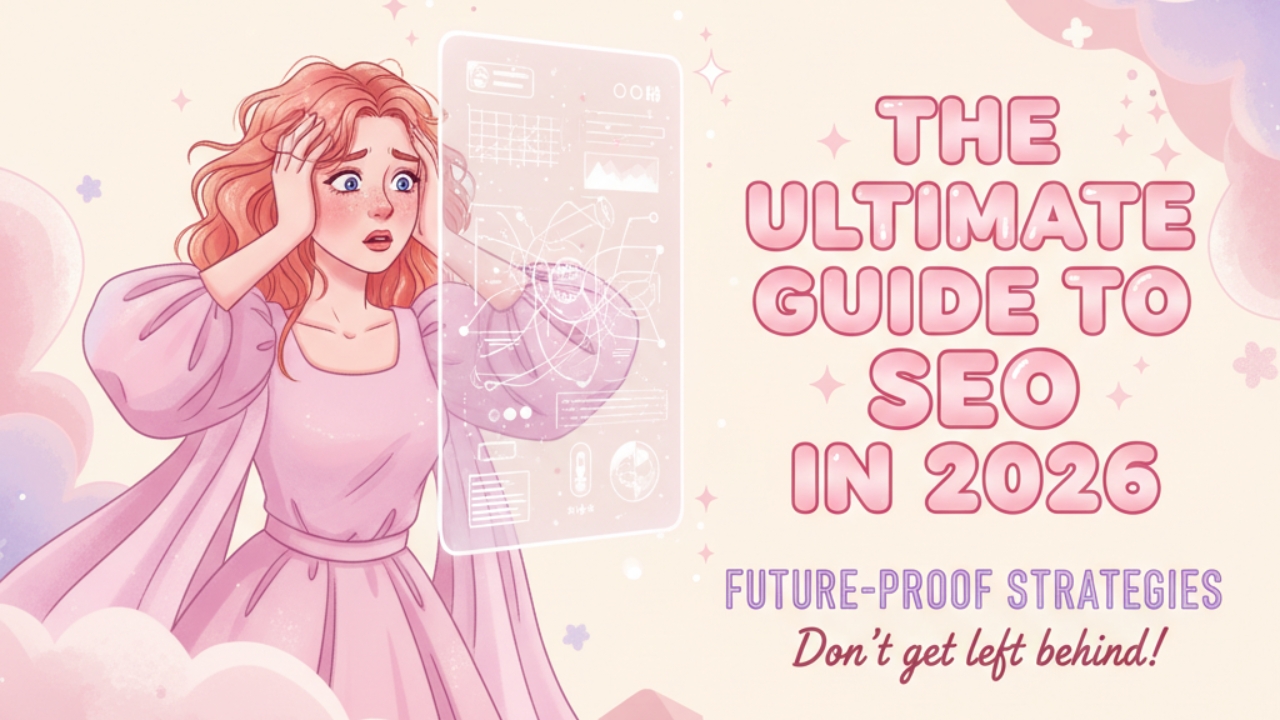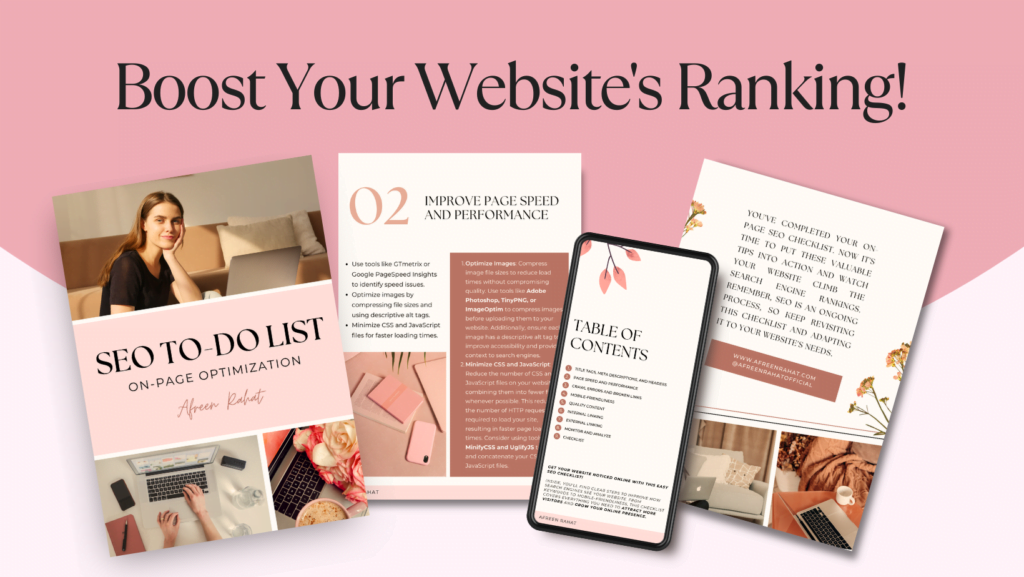Your go-to resource for mastering search engine optimization in the age of AI, personalization, and evolving user behavior
Table of contents
Introduction: Why SEO Still Matters
If you have heard someone say that SEO is dead, they have not been paying attention.
In 2026, search engine optimization (SEO) is more important and more nuanced than ever. Google and other search engines have become significantly smarter, users have changed how they search, and artificial intelligence is now deeply integrated into every part of the search experience.
However, there is no need to panic.
Good SEO today is not about tricking algorithms or stuffing keywords. It is about understanding your audience, delivering real value, and building trust, all while making your website easy for search engines to understand.
This guide explains SEO in 2026 in simple, clear language, with practical steps, real-world examples, and helpful links to tools and resources. Whether you run a small business, manage a blog, or lead a marketing team, this guide will help you rank higher, get more traffic, and connect with real people.
How SEO Has Changed Since 2020
SEO has evolved dramatically over the past six years. Here is what is different:
- AI-powered search: Google’s Search Generative Experience (SGE) now uses generative AI to answer complex queries directly in search results. This means featured snippets and AI overviews appear more often, and your content must be structured to feed these systems.
- User experience is a ranking factor: Core Web Vitals became critical in 2021, and in 2026, user behavior metrics such as bounce rate, dwell time, and engagement are even more influential.
- Less focus on individual keywords, more on comprehensive topics: Instead of targeting “best running shoes,” you must cover the entire topic cluster, including types of running shoes, how to choose them, injury prevention, brand comparisons, and more.
- E-E-A-T is non-negotiable: Google now emphasizes Experience, Expertise, Authoritativeness, and Trustworthiness, especially for YMYL (Your Money or Your Life) topics like health, finance, and safety.
- Search is multimodal: People search with voice, images, and even video clips. SEO must adapt beyond text.
Learn more: Google’s Search Quality Rater Guidelines (2025 Edition)
Core Pillars of SEO
Successful SEO in 2026 rests on four interconnected pillars.
Technical SEO
Technical SEO ensures search engines can find, crawl, understand, and index your website properly.
Key elements in 2026:
- Site speed: Must load in under 2 seconds on mobile. Use tools like PageSpeed Insights .
- Mobile responsiveness: Over 70 percent of searches happen on mobile devices.
- Structured data (Schema): Helps search engines understand your content. For example, use Product schema for e-commerce or Article schema for blogs.
- HTTPS and security: Non-negotiable. Google marks non-HTTPS sites as “Not Secure.”
- Clean URL structure: Use readable URLs like
/best-running-shoes-2026instead of/p?id=12345.
Action step: Run a free Google Search Console audit to find crawl errors, mobile issues, and indexing problems.
Resource: Google’s Technical SEO Starter Guide
Content and User Intent
In 2026, content must match the user’s intent, not just keywords.
There are four main types of search intent:
- Informational: “How to fix a leaky faucet”
- Navigational: “Facebook login”
- Commercial: “Best CRM software 2026”
- Transactional: “Buy iPhone 17 Pro”
Your job is to create content that perfectly answers the query behind the search.
Best practices:
- Use clear headings (H1, H2, H3) that reflect questions users ask.
- Include FAQ sections. These often get pulled into AI overviews.
- Update old content regularly. Freshness matters, especially for trending topics.
- Add multimedia: Images, videos, and infographics increase engagement.
Example: A recipe blog that includes step-by-step videos, ingredient substitutions, and nutrition info ranks better than text-only posts.
Action step: Use AnswerThePublic to discover real questions people ask about your topic.
E-E-A-T and Trust Signals
Google’s E-E-A-T framework (Experience, Expertise, Authoritativeness, Trustworthiness) is now a core part of ranking, especially after 2023 updates.
How to demonstrate E-E-A-T:
- Show author bios with credentials, experience, and photos.
- Cite credible sources such as studies, experts, or official data.
- Display real customer reviews and testimonials.
- Link to authoritative sites (for example, CDC for health info, IRS for tax advice).
- Avoid AI-generated content that lacks depth or originality. Google can detect thin or generic text.
Warning: In 2025, Google introduced the “Helpful Content System” that downranks content created primarily for search engines rather than people.
Action step: Add an “About Us” page that explains your mission, team, and why you are qualified to write on your topic.
Read more: Google’s E-E-A-T Guidelines Explained
AI and Automation in SEO
AI is both a tool and a challenge in 2026.
How AI helps SEO:
- Content ideation: Tools like Clearscope or Surfer SEO analyze top-ranking pages and suggest content structure.
- Keyword research: AI can predict emerging trends, such as “AI-powered fitness trackers.”
- Technical audits: Platforms like Screaming Frog use AI to spot issues faster.
But be careful:
- Do not auto-generate entire articles with AI. Google prioritizes human insight.
- Use AI to enhance, not replace, your expertise. For example, use AI to draft, then edit deeply for personality and accuracy.
- Optimize for AI overviews: Structure answers in clear, concise paragraphs under subheadings.
Action step: Use Google’s AI Overview guidelines to format content for SGE.
Mobile-First and Core Web Vitals in 2026
Google has used mobile-first indexing since 2019, and in 2026, it is the default.
Core Web Vitals measure real-world user experience:
- Largest Contentful Paint (LCP): Should be 2.5 seconds or less
- Interaction to Next Paint (INP): Should be 200 milliseconds or less (replaced FID in 2024)
- Cumulative Layout Shift (CLS): Should be 0.1 or less
How to improve:
- Compress images with TinyPNG or use WebP format
- Use a fast hosting provider such as Cloudflare or SiteGround
- Remove unnecessary plugins or scripts
- Implement lazy loading for images and videos
Action step: Test your site with Google’s Core Web Vitals Report in Search Console
Voice Search and Conversational Queries
Over 50 percent of searches in 2026 are voice-based, via Siri, Alexa, Google Assistant, and other voice assistants.
Voice search is more conversational and uses longer phrases:
- Text search: “weather NYC”
- Voice search: “What is the weather like in New York City today?”
Optimize for voice:
- Target question-based queries: “How do I,” “What is,” “Where can I”
- Use natural language in your content
- Aim for position zero (featured snippets), as voice assistants often read these aloud
- Ensure your site loads quickly. Voice users expect instant answers
Action step: Include a Q&A section on key pages using schema markup like FAQPage .
Local SEO: Still Critical for Brick-and-Mortar Businesses
If you have a physical location, local SEO is essential.
Key tactics in 2026:
- Claim and optimize your Google Business Profile (GBP )
- Add high-quality photos, accurate hours, and service areas
- Encourage customer reviews and respond to all of them
- Use local keywords: “plumber in Austin TX” instead of “plumber”
- Ensure NAP consistency (Name, Address, Phone) across directories like Yelp, Bing Places, and Apple Maps
Action step: Use BrightLocal to audit your local citations and track local rankings.
Pro tip: In 2026, Google prioritizes “near me” and real-time availability, such as “dentist open now near me.”
The Rise of Multimodal Search (Images, Video, Audio)
Search is no longer just text.
- Google Lens lets users search by taking a photo
- YouTube is the second-largest search engine
- Podcasts appear in search results for audio queries
Optimize for multimodal search:
- Images: Use descriptive filenames (
red-running-shoes-nike-2026.jpg) and alt text - Video: Add transcripts, captions, and schema markup (VideoObject )
- Audio: Publish podcast episodes with show notes and keyword-rich titles
Action step: Submit a Video Sitemap to help Google index your videos.
SEO Tools You Need in 2026
| Google Search Console | Monitor indexing, clicks, errors | Visit |
| Google Analytics 4 (GA4) | Track user behavior | Visit |
| Ahrefs | Backlink analysis and keyword research | Visit |
| SEMrush | Competitive SEO and content ideas | Visit |
| Surfer SEO | AI-powered content optimization | Visit |
| Screaming Frog | Technical site audits | Visit |
| Moz Local | Local SEO management | Visit |
Free alternative: Ubersuggest offers basic keyword and site analysis for free.
Common SEO Mistakes to Avoid
- Ignoring mobile users. Your site must work flawlessly on phones.
- Publishing thin or AI-only content. Add original insights.
- Buying backlinks. Google penalizes unnatural links.
- Keyword stuffing. Write for humans, not bots.
- Not updating old content. Refresh outdated posts annually.
- Skipping structured data. You may miss out on rich results.
- Having broken links. Use Dead Link Checker monthly.
Future-Proofing Your SEO Strategy
SEO in 2026 is not about quick tricks. It is about building a sustainable, user-first presence.
Long-term tips:
- Focus on solving problems, not chasing rankings.
- Build a loyal audience through email, social media, and community.
- Diversify traffic sources. Do not rely only on Google.
- Stay updated. Follow the Google Search Central Blog and Search Engine Journal .
- Test and measure. Use GA4 to see what content drives conversions, not just clicks.
Remember: SEO is a marathon, not a sprint. The sites that win in 2026 and beyond are those that earn trust, deliver value, and adapt quickly.
Conclusion
SEO in 2026 is smarter, more human-centered, and deeply integrated with AI, but the core principles remain the same:
- Help real people
- Be trustworthy
- Make your site fast and easy to use
- Create content that answers real questions
You do not need a huge budget or a tech degree. You just need consistency, empathy, and a willingness to learn.
Start small:
- Run a Google Search Console report
- Fix one technical issue
- Update one old blog post
- Add an author bio
Over time, these small actions compound into higher rankings, more traffic, and real business growth.
Want more?
- Download our free SEO Checklist (PDF)
- Watch: SEO for Beginners – Google’s Official Course
Written with care in November 2025 for businesses, bloggers, and creators ready to thrive in 2026.
Share this guide if you found it helpful.
Questions? Drop them in the comments below.



